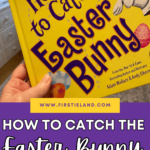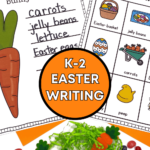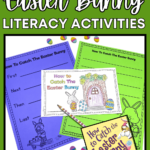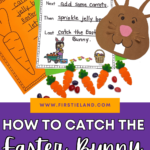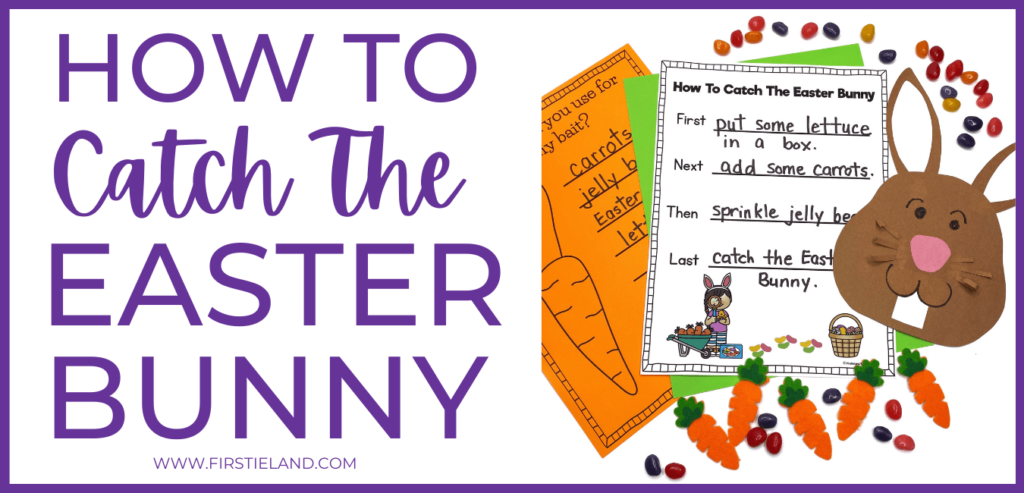
Are you ready to hop into some Easter-themed fun with your kindergarten or 1st-grade students? If you're looking for engaging activities to accompany the funny children's Easter book How To Catch The Easter Bunny by Adam Wallace, you've come to the right place! This is always a favorite storybook to add to my book studies in April!
In this blog post, I'll share a variety of ideas that you can incorporate into your kindergarten or first-grade lesson plans to make reading and writing time extra special. So, let's dive right in and explore some egg-citing ways to bring this funny children's Easter read-aloud to life in your classroom!
How To Catch The Easter Bunny Activities
Whole Class Activity
Begin your lesson by reading aloud the story How To Catch The Easter Bunny by Adam Wallace & Andy Elkerton. In the story, the Easter Bunny outsmarts all the children trying to trap him in many different ways. He escapes from a box with carrots as bait, a hole in the floor, and an imposter bunny that tries to lure him into the trap! Your students will love the bright pictures and rhyming text in the story.
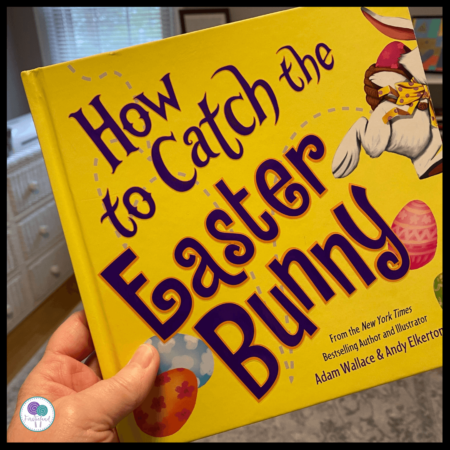
As you're reading, review some of the new vocabulary words in the book like identity, burrow, and supersonic. Prepare for these vocabulary activities by writing the new words on note cards to review as you get to these words in the story. During your read aloud you can also ask comprehension questions about the story.
Some great questions to use with How To Catch The Easter Bunny might include:
- Why do you think they want to catch the Easter Bunny?
- What do you think they would do with the Easter Bunny if they caught him?
- Describe some of the traps in the story. How do they work?
- What was the rug trick?
- Discuss the character traits of the Easter Bunny. Why do you think he is so hard to catch?
- If you were in the story, what would you do differently to catch the Easter Bunny?
After you finish reading the story, work with your class in interactive writing to make a list of things they could use as bunny bait to catch the Easter Bunny. Interactive writing is when the students and teacher share the pen as they write the list. Have students help you brainstorm ideas for bunny bait such as carrots, jelly beans, & Easter eggs. Choose one student to be the scribe for each word. Have the class help him/her sound out the word and write it on the chart. If you prefer, you can use a graphic organizer such as a web to write the ideas.

Individual Student Work
Next, have your students design their own Easter Bunny trap on paper. During this independent work time, students can draw their traps and show how the traps will work. Ask students what kind of materials they would use to trap the bunny. What kind of bunny bait would they use? Encourage them to use creative thinking and come up with their own unique designs. If you want to go a step further, you can have students create their traps. Give them some helpful materials like boxes, popsicle sticks, construction paper, and glue to get started.
Writing Activities
Next, it's time for students to begin some creative writing with the writing prompt “how to catch the Easter Bunny”. Begin your writing activity with a demonstration of how to do procedural writing. Show students how to use the temporal words first, next, then, and last in their writing. Encourage them to think about the steps they would take to trap the Easter Bunny.
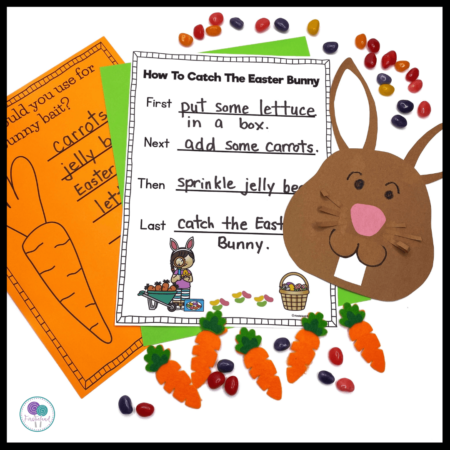
Give each student a writing template to help them get started. There are several differentiated versions to choose from to meet the needs of all your writers. Let your students refer to the children's book How To Catch The Easter Bunny if they need ideas for their writing. If you have struggling writers, you can meet with them in small groups while the rest of your class works independently.
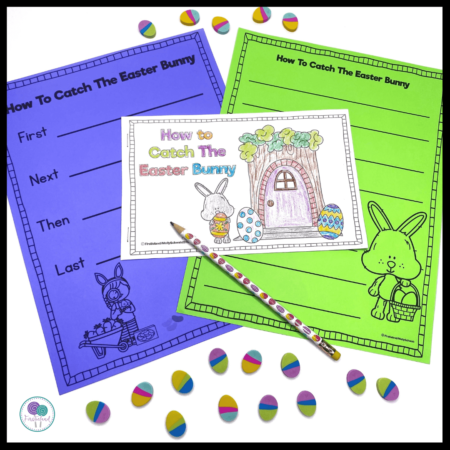
Easter Bunny Craft Activity
Finally, finish off your Easter Bunny lesson plans by having your students make a cute Easter Bunny craft. You can copy the patterns onto colored paper for the kids to use or have them trace the patterns and cut them out. This gives students more creative opportunities to use fine motor skills. When you pair the writing activity and craft it makes a wonderful bulletin board display for your Spring Bulletin board in your classroom or hallway.
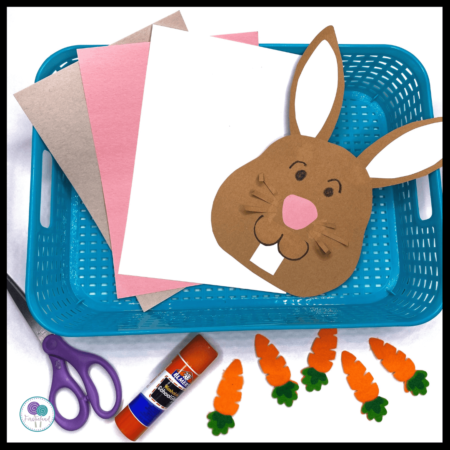
These Easter Bunny read aloud lessons will become a new tradition that you'll want to do with your class year after year. It's a great way to combine your English language arts activities with reading and writing. And the best part is, once you have all of these book companion activities created they'll be ready for you next year to use – just print and go! It's the perfect Easter writing activity to do right before your Spring break.
CLICK HERE TO VIEW THIS RESOURCE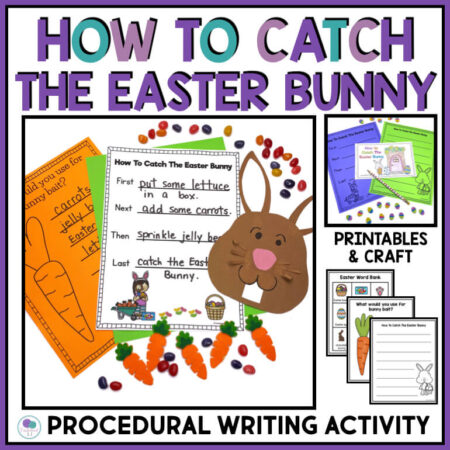
Expanding the Lesson
To add more depth to your How To Catch The Easter Bunny activities, consider incorporating additional subjects such as math and science. For math, you can have students create graphs to show the students' favorite bunny bait choices or measure and compare the sizes of their bunny traps. This not only reinforces mathematical concepts like data representation and measurement but also encourages critical thinking and analysis.
In science, take the opportunity to delve into the concept of camouflage and how animals, like the Easter Bunny, use it to avoid predators. Discuss different types of camouflage in nature and how animals adapt their appearances to blend in with their surroundings. You can also explore the properties of materials used in creating the traps and discuss which ones are most effective. This hands-on exploration of materials science engages students in real-world problem-solving and encourages them to think like scientists.
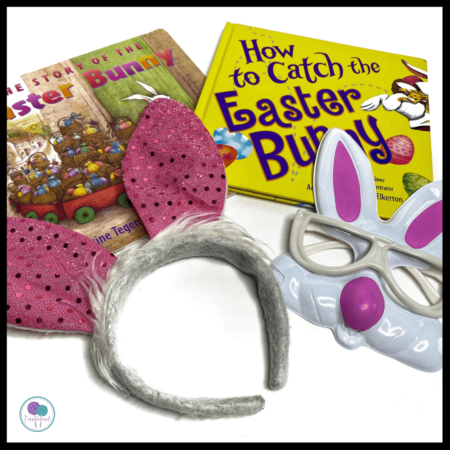
Additionally, consider integrating social studies and English language arts into your How To Catch The Easter bunny activities. For social studies, you could explore the history and cultural significance of Easter traditions worldwide. Compare and contrast how different cultures celebrate Easter and discuss the origins of Easter symbols like eggs and bunnies.
In English language arts, you can extend the learning by having students write other Easter-themed stories or poems inspired by How To Catch The Easter Bunny. Encourage them to use descriptive language and creative storytelling techniques to bring their stories to life. You can also incorporate vocabulary activities related to the story, such as identifying synonyms and antonyms for words like “trap” and “bait.”
By integrating multiple subject areas into your lesson plans, you provide students with a holistic learning experience that reinforces key concepts across the curriculum.
Extension Activities
Extend the How To Catch The Easter Bunny theme beyond the classroom with take-home activities. Encourage students to share their favorite parts of the story with their families and try making their own bunny traps at home using materials found around the house. You can also suggest Easter-themed crafts or baking projects related to the story for families to enjoy together.
Reflection and Discussion
After completing the activities, take some time for reflection and discussion with your students. Ask them what they enjoyed most about the lesson and if they have any new ideas for catching the Easter Bunny. Discuss any challenges they faced during the activities and how they overcame them. This not only reinforces their learning but also encourages critical thinking and problem-solving skills.
Ready to get started with these How To Catch The Easter Bunny writing and reading activities? This book study literacy unit includes everything you need with easy lesson plan ideas, writing prompts, graphic organizers, and craft activities. Click here to take a closer look.
CLICK HERE TO VIEW THIS RESOURCE
Looking for more Easter activities to do in your classroom? Check out these posts:
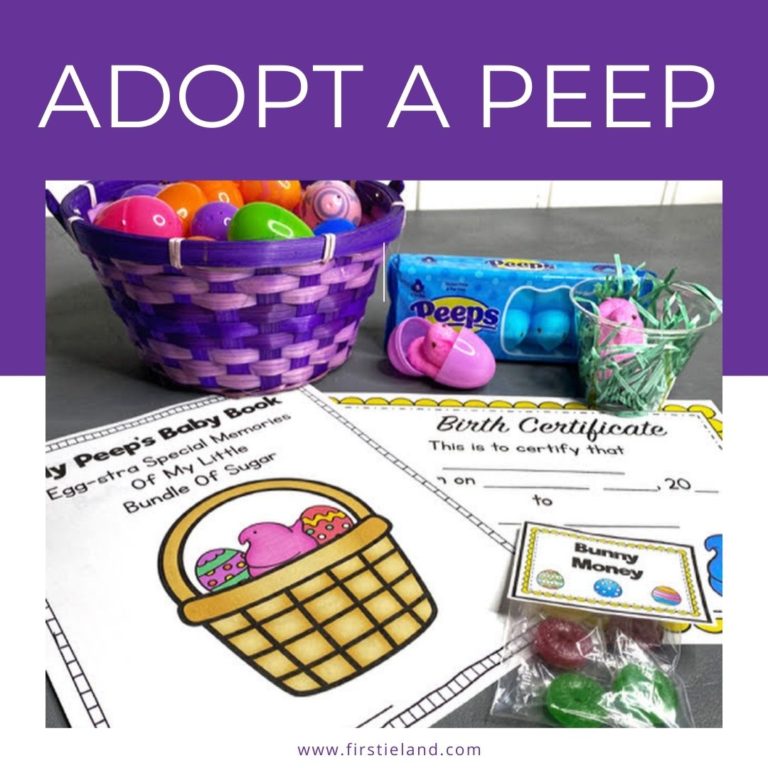
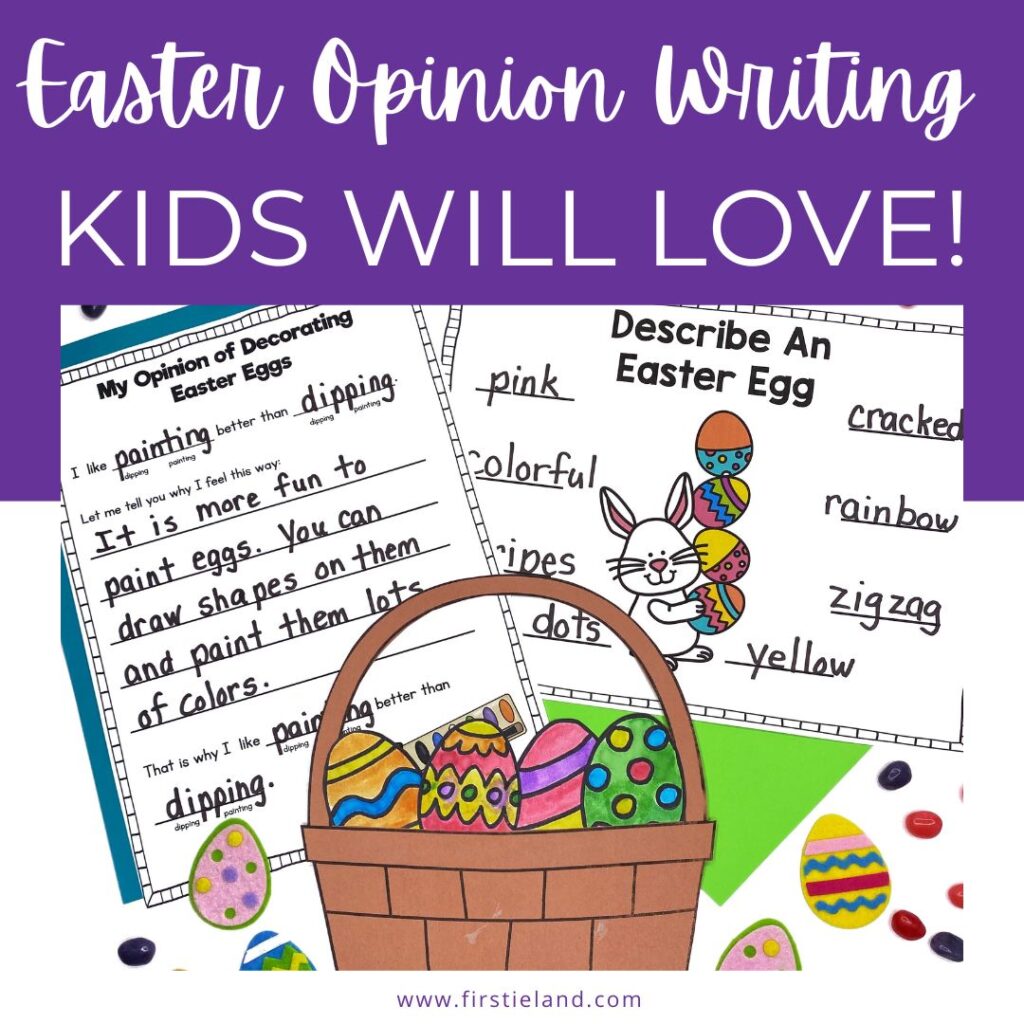
SAVE THESE IDEAS FOR LATER!
Take a minute to save these How To Catch The Easter Bunny activities to your favorite Easter Pinterest board so you can remember them later!
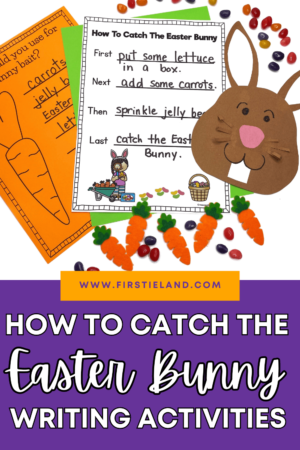

ABOUT THE AUTHOR
Hi, I'm Molly, the creative mind behind Firstieland. With over 35 years of experience in early childhood education, I'm your primary support for resources that will save you time and make learning feel like play. Learn more about my mission for Firstieland here.

